Handy kitchen design tips less frequently talked about
Five features that made the biggest difference to the flow and function of all of my kitchens
Given I am knee-deep in making over my kitchen (catch-up with the progress here) and given that I am not yet able to share the final result, because as always things take far longer than anticipated and, as is typical for me, I am of course adding little design changes as I go, but I thought I’d still stay on topic for this month’s blog and provide you with a handy few, less talked about, tips to consider when creating a kitchen. These are my top features when it comes to practicality, but there’s a disclaimer: I am absolutely aware, some kitchens simply do not provide the opportunity to implement everything listed without a complete refurb. My current one is one of them, as you will see. But this does not mean achieving a great functioning kitchen wouldn't be possible still. Even having just one of these features will improve the flow of the space by miles. I realise writing these words that I’m making quite big promises. However, I tried and tested the below in various kitchens and these are the features I keep going back to.
Redesigning or even updating an existing kitchen is very exciting. At the same time it can be slightly daunting too. There is so much to think about, from golden triangle, to pipe restrictions, cooker hood sizes, gas safety, etc etc etc. Things I am sure you’ve heard of, or if not, will come across on your first google on how to design a kitchen. So there is no need for me to add to this already extensive list today, instead I will concentrate on the less talked about features which made a big difference to all of my kitchens. Having designed and remodelled a few now, my first one in my teens, I learned so much about kitchen design and especially the practicalities worth thinking about, that at least I have not seen talked about much, which however help make the most of the space and ensure a very functional flow when using the kitchen.
So here we go:
If possible, don’t block the view with tall cabinets
Have you ever been in a kitchen where you were instantly hit with the view of the side of a tall cabinet or even the side of the free-standing fridge? How did that make the space feel? I have, and am faced with this setup every day in my current kitchen, and for me the space instantly seems closed off, as my view of the rest of the room is blocked when walking through the door.
Can I do anything about this in my current kitchen? Sadly not, as other than swapping my tall fridge for a smaller under counter one, there’s nowhere for it to go at the moment. But, in previous kitchens, I did have the wiggle room to swap things around and if the opportunity presents itself, I would always consider not to use tall units to finish off the row of bottom cabinets right next to the entrance, and move them further away from the door, or even to the back wall or into a recess, if available. This would ensure an even flow of the space where nothing is blocking the view of the beautiful worktops, cupboards and backsplash, we spend hours choosing. So, a slight rejig would make the space feel instantly more open, airy and welcoming.
Here a couple of examples:
In my London kitchen, I strategically placed the two tall units, housing the built-in fridge and double oven, at the far back. These otherwise imposing units would not be visible when entering the open plan kitchen and living area and thus are not encroaching on the space. Additionally, they are tucked away to where the room has the biggest ceiling height, ensuring the extra tall units are in proportion to the rest of the space.
In my last home, I didn’t choose the placement of the cabinets, but was very glad to see that the tall fridge was strategically placed in the corner of the far wall, facing the entrance of the kitchen. The kitchen designers here have not chosen to create a U-shaped design, but if they had, there would still be the possibility to place the fridge or a tall unit on the wall housing the window, as the already existing narrow partition wall would have hidden it from view and in combination with the open plan airy layout of this particular kitchen, this would also have worked perfectly.
Don’t underestimate the power of drawers
Every time I live in a house where I didn’t design the kitchen, I can bet the kitchen would consist of 99% standard shelving units and 1% drawers. This one small drawer, if you’re very unlucky, is then destined to house all your cutlery, serving spoons, cake server, pizza cutter, knives, you name it. It is never sufficient for anyone's needs. Additionally, the shelving units make you climb deep inside to get to something at the back, more often than not having to empty the contents of said cupboards to discover that thing you were after.
So I promised myself, anytime I would design a kitchen afresh, I would swap as many of the standard shelving units as possible for very practical drawers, and my London kitchen was the perfect example. I installed one standard and two extra wide, deep, and fully extendable drawer units, big enough to house all the cutlery, plates, pans, baking trays, kitchen linen, and small kitchen appliances. No more crouching down awkwardly lifting the cereal bowls out the way to get to the dinner plates. No, these drawers allowed me to see everything and I could get to anything with ease. I was worried about the difference in price at first, but after shopping around, I think it’s worth it. I am a big fan of IKEA kitchen units for instance, which the London one had, and the definite advantage here to other suppliers is value for money when it comes to drawers.
Now, but what about an already existing kitchen that does not have drawers, can improvements be made there? I’d say so, there is the possibility to exchange some of the cabinets, if that’s in the renovation budget, or there is the possibility to add internal drawers to existing cabinets. This is actually something I am very strongly considering for my current kitchen, and if I ever do come to adding those, you of course will be the firsts to know. Watch this space…
Save cash and scrap the corner unit carousel
Now, I am aware that I am contradicting myself here. Having just talked about avoiding shelving units, I am now advising to use them in the most awkward units of all, the corner cupboard? Well, yes, but the reason for this is quite simple and that is space and budget. Carousels in corner units can be seen as practical, as they allow, same as the drawers, to get to everything with ease. However, carousels are also expensive and do not actually use the full space of the unit. If they would, it would not be possible to turn the carousel or slide it out of the cabinet, depending on its design of course.
Don’t get me wrong, I did install carousels in previous kitchens and added one to the shopping basket when designing the London kitchen. But after considering the purpose of the corner cupboard properly, the carousel quickly spun out of the basket again - pun intended. Instead to maximise the space, and to ensure easy access to everything, I followed my next handy tip.
Stock up on baskets, boxes, and bowls
Okay, you may already be using baskets to store bits around the house. But are you using boxes inside your cabinets? We usually can close the door on all the mess, so why use baskets here? For the simple reason of keeping items together and for easy access to everything. In a kitchen this is actually quite crucial, due to all the little items that collate, such as sauces, tea boxes, bags of nuts, flour, rice, and so on.
I may be keeping a few of these items out on display in glass jars, such as pasta, but a lot of the items are in some sort of basket, bowl, or box around my kitchen, and especially in my cupboards. Where I do have shelving units instead of drawers, especially in the previously mentioned corner cupboard, storage boxes allow me to order items by groups and get them out easily to access anything at the back of the cabinet. Additionally, I can get out the box I need for cooking, access all the ingredients inside and put it all away again nicely when I’m done. In small kitchens especially, where space is at a premium, this is one of the most practical solutions to implement.
Create a hot drinks station
So many times I’ve been in kitchens where I needed to zigzag my way through the space to make a cup of tea, moving from one corner to the next to get together mugs, spoons, tea bags, milk, and kettle. I understand that it might make sense to keep certain groups of ingredients or crockery together and that milk definitely belongs in the fridge, but when it comes to making a simple cuppa, every day, possibly multiple times a day, you’ve got a mission on your hands.
So in any of my kitchens, I ensure the main pieces for a cup of tea or coffee are always grouped together at a dedicated hot drinks station: The tea bags used most regularly, Earl Grey for me, are on the counter in a nice tin next to the kettle. Any specialist or spare tea bags are stored in a cupboard, on shelves, or preferably drawer unit, right by the kettle. Usually you would also find most of my mugs in a cabinet close by, because if we’re honest, most of us don’t have the beautiful curated mug collection we see on social media or in magazines, so the everyday collection of random crockery is not really worth making a feature of. The few lovely pieces we do own however are, and you probably guessed where, by the kettle. Next, if the kitchen design allows for it and the tea station is close to the fridge, for the milk of course, the perfect setup is complete. The cherry on the top is my small tip for used tea bags. A tiny tabletop bin is usually part of my station, especially if the bins are not close by. This usually does not come in the form of those metal swing lid bins you may know from hotels. I find these are impractical for household use as these are too big and there is the issue of tea bag mould. Instead, I simply use the little glass pots you get with some desserts.
And that’s my list of features which have made the biggest difference to the practicality of all of my kitchens over the years. I hope this is helpful in any way, but I am also intrigued, have you made clever functional changes to your kitchen and what made the biggest difference? Let me know in the comments or send me a private message if you prefer to chat there.
Articles you may be interested in
From Garage To Kitchen
Imagine this, a kitchen as small as a tiny cupboard. When standing in the middle, you are easily able to touch every wall around you. You need to be creative with how you use your millimetres of counter space. And if that’s not all, you have to interrupt your guests congregating in the dining area, every time you need to fetch some utensil overspilling …
Kitchen Makeover Reveal
Have you ever been to a viewing, and instantly as you entered the kitchen, you were hit with a feeling of excitement? Not because you’re looking at the most perfect kitchen you have ever seen, but because you’ve just discovered a little gem you can polish up and make shine? Thus far, this has happened to me in a lot, if not most, of the houses or flats …
House to home without renovating
It is very rare that a new house, whether rented or owned, is feeling like your home when first moving in. There is a small chance that you may get lucky and find a home that already has your style, the wall colours are exactly what you like, the floors are what you would have chosen, and so on. I have not yet come across this home. But then it is also …


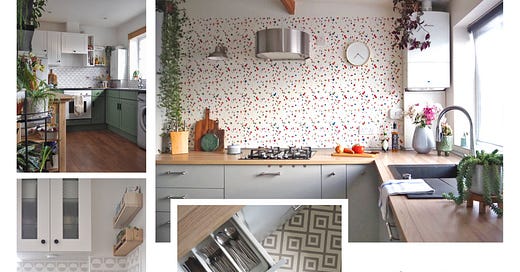


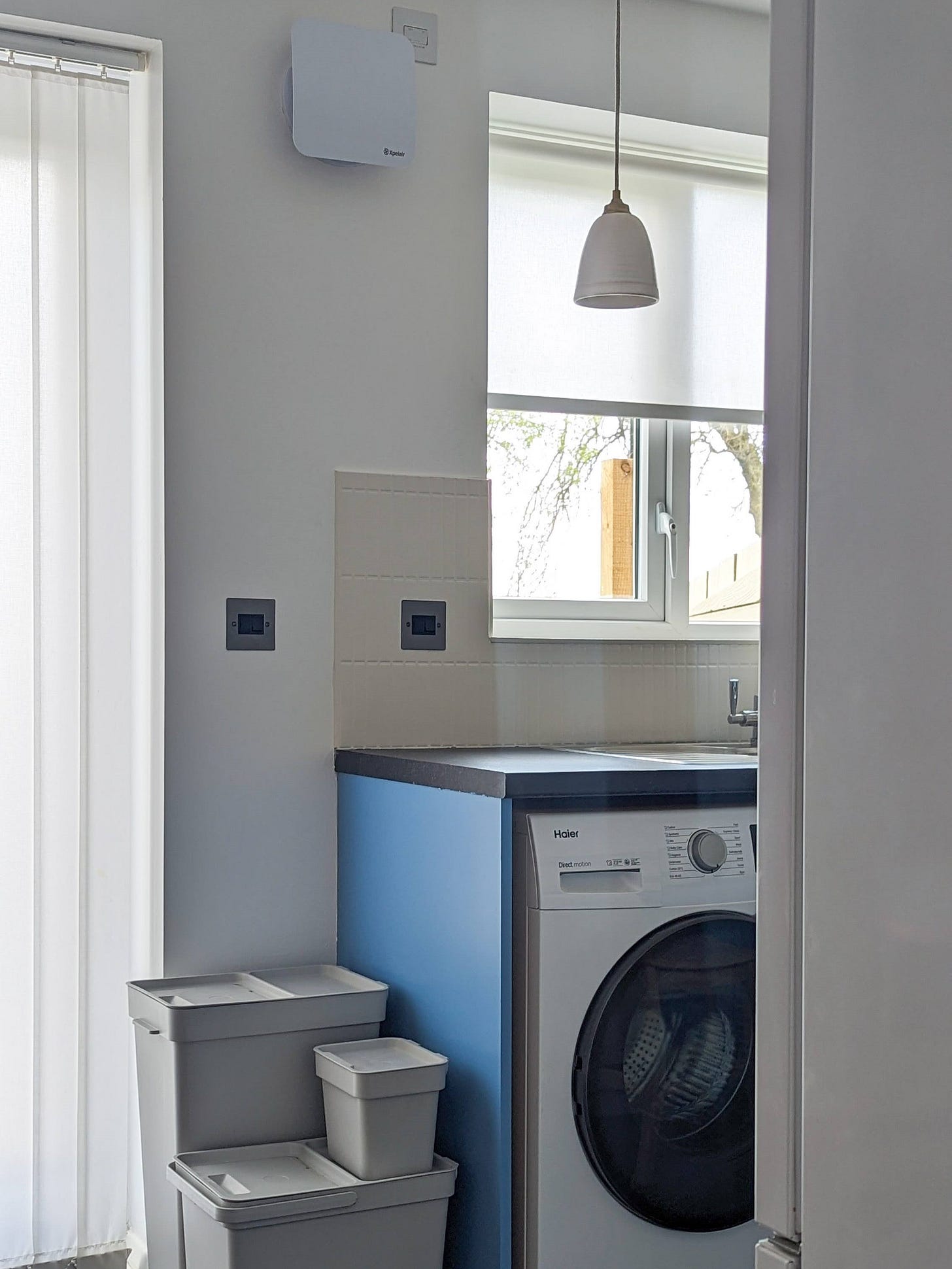
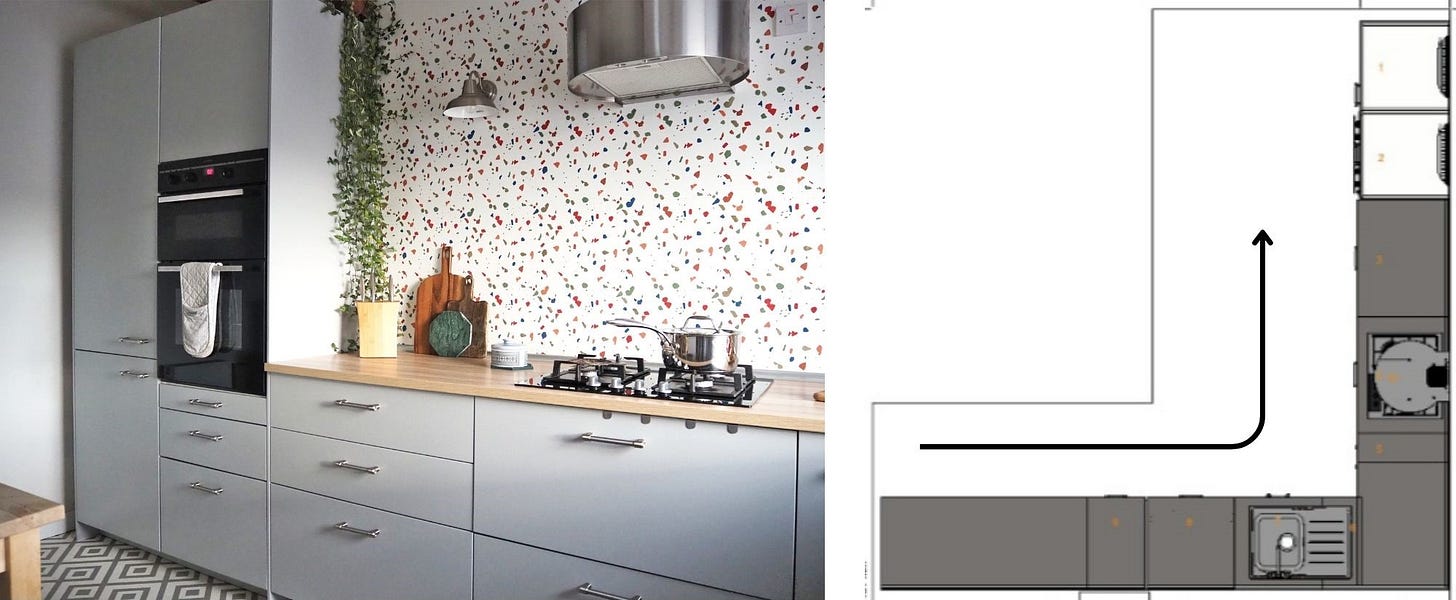

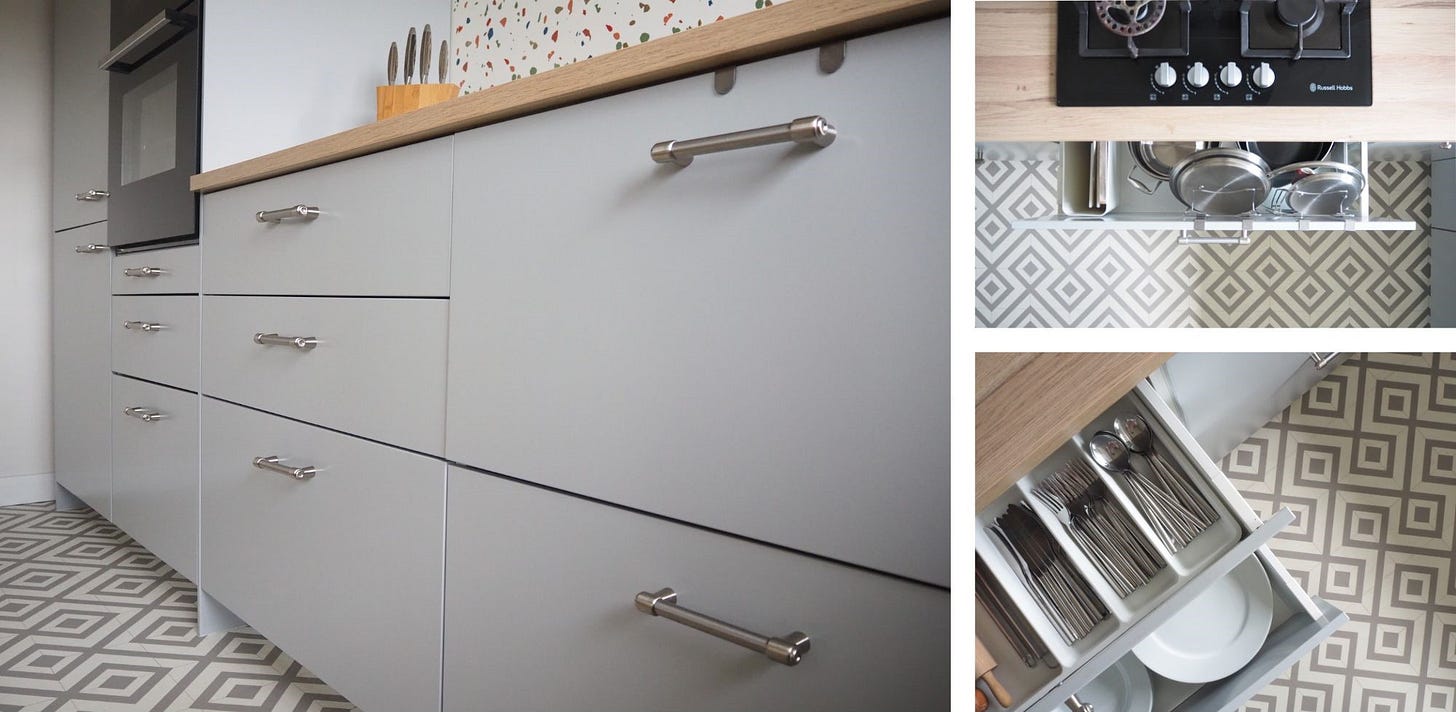
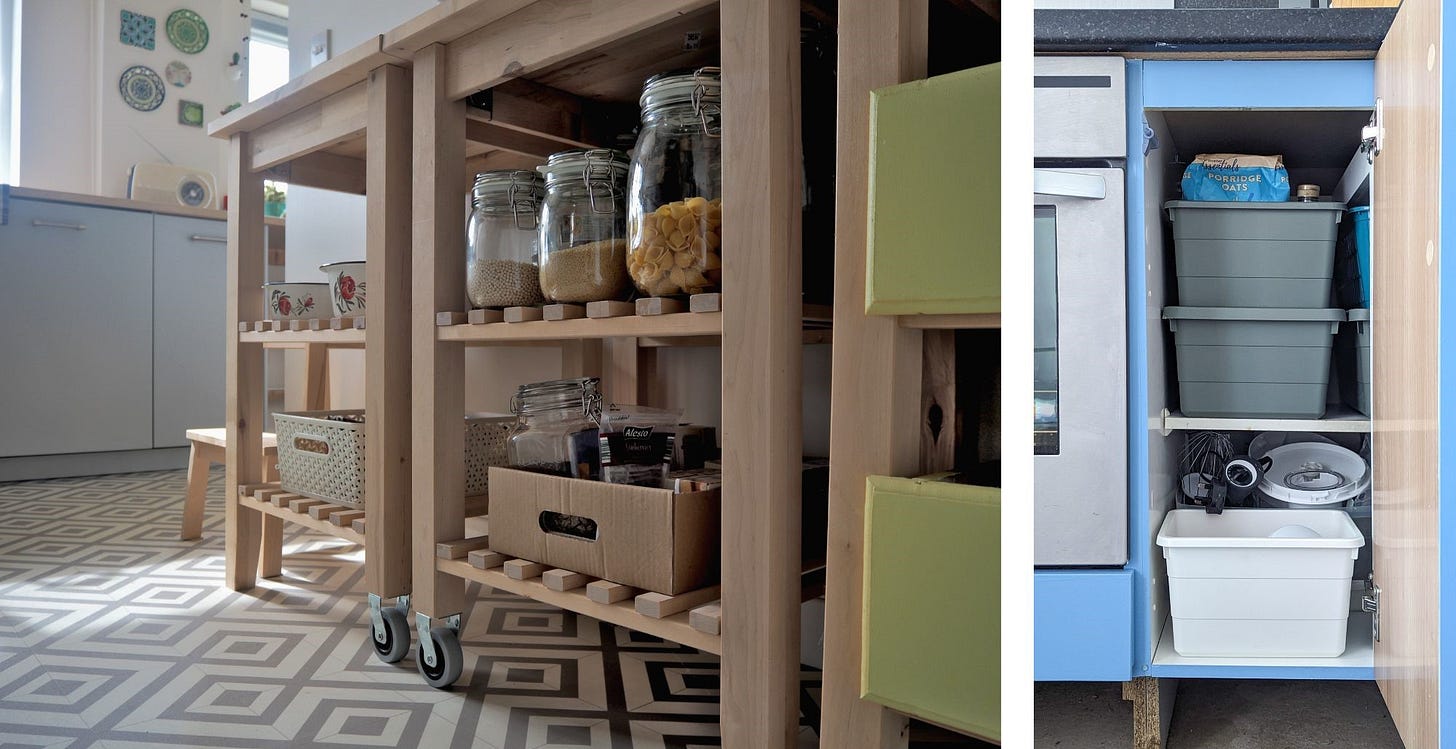




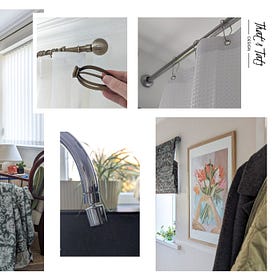
Love the teabag bin tip (I copied off you) and kitchen coming along great. Lots of little tips that make a big difference 😍
Wonderful tips 👏